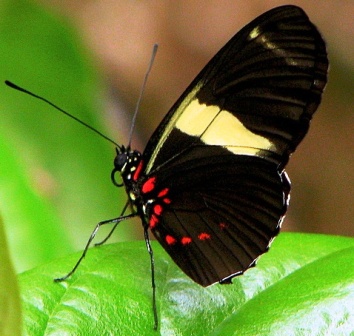- Series:Animals, Plants, Transcript English
Acts 8:23
“For I perceive that thou art in the gall of bitterness, and [in] the bond of iniquity.”
Tropical passion vines have a unique defense against insects that would nibble on their leaves. Its leaves contain sealed packets of cyanide that are made active by being linked with sugar molecules. There are other sealed packets with an enzyme that releases the sugar molecules, activating the cyanide. When an insect chews on the leaves, both packets are broken, the cyanide  is activated and another predator is gone.
is activated and another predator is gone.
However, the caterpillar of the tropical butterfly Heliconius sara can munch away happily on the leaves, oblivious to the cyanide, apparently immune to the powerful poison. Scientists wondered why these caterpillars didn’t die. They found out that the caterpillar has an enzyme that prevents the release of the cyanide. This enzyme changes the cyanide to a harmless sulfur based chemical before the leaf’s enzyme can cause the cyanide to be released. However, the caterpillar still has to be careful because some vines grow special defensive hairs that can impale an unwary caterpillar.
Evolutionists would have us believe that these caterpillars, by trial and error, evolved the ability to neutralize the cyanide. Even if we were to grant the ridiculous idea that caterpillars are smart enough to do this, this explanation still doesn’t work. Any caterpillar that would munch the passion leaves would face instant death without a chance to experiment or reproduce. However, the Creator of all chemistry has once again demonstrated His existence by this obvious and clever relationship.
Prayer:
Father, remove any poison of bitterness from my heart. Amen.
Notes:
Science News, 7/22/00, p. 59, “How butterflies can eat cyanide.” Photo: Licensed under the Creative Commons Attribution-NonCommercial-NoDerivs License – Version 2.0. Copyright 2008, Alex Popovkin.
